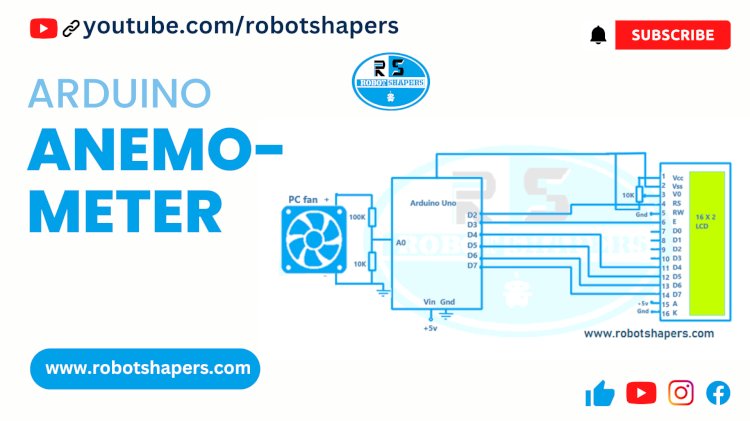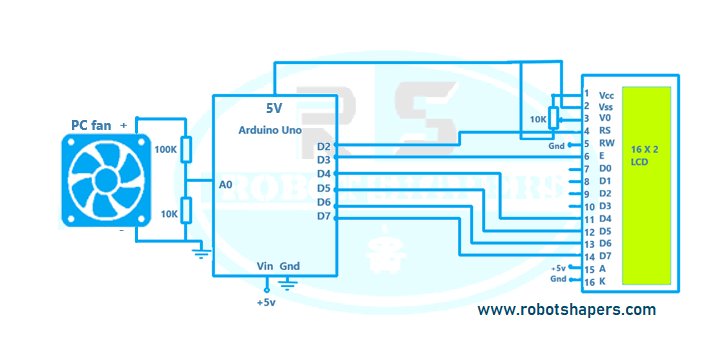Arduino Wind Speed Monitoring Device
Welcome to Robotshapers.com, where we unlock the secrets of wind measurement with our state-of-the-art anemometers. As an essential instrument in meteorology, aviation, renewable energy, and more, anemometers are crucial for understanding weather patterns and optimizing various industries. At Robotshapers, we offer advanced anemometers that utilize cutting-edge technologies, from the classic dish anemometer to the highly accurate sonic anemometer. With applications ranging from weather forecasting to architectural design, our anemometers provide invaluable wind data for safety, planning, and optimization. Join us at Robotshapers.com and harness the power of wind for a brighter future.

An anemometer is an instrument used to measure wind speed and sometimes wind direction. Weather plays an important role in many areas such as climate, environmental protection and renewable energy. Anemometers use different technologies to measure wind speed. The most common type is the dish anemometer, which contains three or more vessels mounted on a rotating axis. When the wind blows, the cup will rotate and the speed will be calculated based on the number of revolutions at a time.
Another type is the sonic anemometer, which uses ultrasonic signals to measure wind speed and direction. These advanced anemometers are accurate and often used in research and scientific applications. Anemometers are important tools that provide important information for safety, planning and analysis in weather forecasting, measuring wind power, building construction, and outdoor activities such as sailing and climbing.
Components required:
Circuit diagram:

Code:
#include
LiquidCrystal lcd(2, 3, 4, 5, 6, 7);
int analogInput=A0;
float vout;
float vin;
float R1 = 100000.0;
float R2 = 10000.0;
int value;
float Velocity=0;
void setup() {
pinMode(analogInput, INPUT);
lcd.begin(16, 2);
lcd.setCursor(2,0);
lcd.print("Robotshapers");
delay(1500);
lcd.setCursor(2,1);
lcd.print("Anemometer");
delay(1500);
lcd.clear();
}
void loop() {
lcd.setCursor(2,0);
lcd.print("Velocity:");
lcd.print(Velocity);
lcd.print(" ");
value = analogRead(analogInput);
vout = (value * 5) / 1023.0;
vin = vout / (R2 / (R1 + R2));
if (vin < 0.09)
{
vin = 0.0;
}
Velocity =0.73*vout// it is analyzed that when wind speed is 1m/sec. it generates 0.73 volts you can do your own practical on that
}
Applications:
Anemometers are widely used in many industries and fields due to their ability to measure wind speed and wind direction. Some important uses of anemometers are:
Meteorology: Anemometers are commonly used in weather stations and climate science to gather wind data for meteorology, climate research and to understand weather phenomena.
Aviation: Anemometers play an important role in aviation by providing pilots with real-time wind information during takeoff, landing and flight.
Renewable Energy: Anemometers are required to measure wind energy and plan wind farms.
Environmental Monitoring: Environmental monitoring agencies use anemometers to measure wind patterns and air pollution.
Architectural Design: Anemometers are used in architectural and engineering projects to evaluate wind loads on structures.
Sports and Recreation: Anemometers are used in sports such as sailing, sailing and kitesurfing where wind can affect performance and safety.
Research and Education: Anemometers are used in scientific research, schools and laboratories to study aerodynamics, water dynamics and wind behavior in a variety of fields.
Best projects in Bhilai, Chhattisgarh, India. Contact : 7067150002

 robotshapers1
robotshapers1 

















